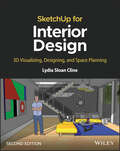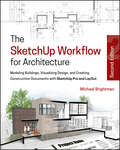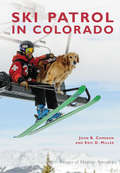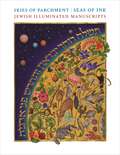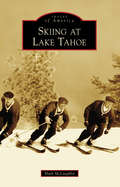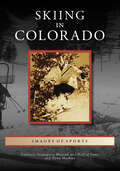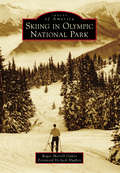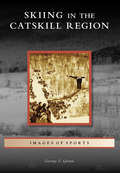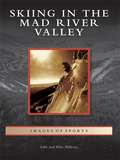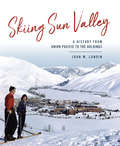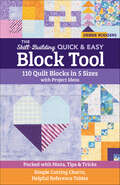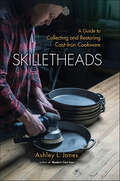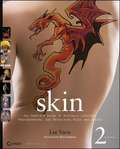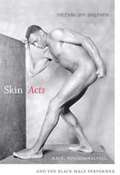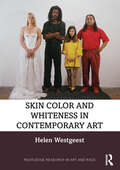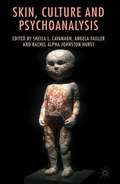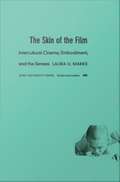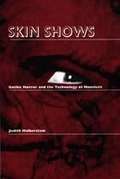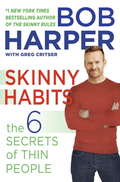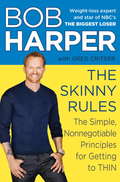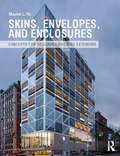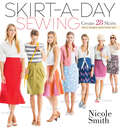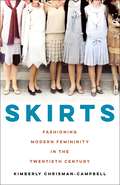- Table View
- List View
SketchUp for Interior Design: 3D Visualizing, Designing, and Space Planning
by Lydia Sloan ClineSketchUp for Interior Design Practical guide addressing the specific needs of interior planners and explaining the latest features of the professional, subscription-based version of SketchUp. SketchUp for Interior Design, Second Edition shows interior designers, architects, planners, students and hobbyists how to design and model with this software. Step-by-step tutorials explain how to create 3D models and space plans, furniture, cabinetry, and accessories. Experiment with colors and materials, import manufacturers’ models, make client presentations and animated walk-throughs. This edition features expanded coverage of the LayOut feature, the Component and Extension Warehouses, and has updates on the latest tools and functions. Each chapter is packed with screenshots, making the instructions easy to follow. Files on a companion site let readers play along with the book’s examples. SketchUp for Interior Design explains how to: Choose or create a template and navigate the interface. Use basic tools such as push/pull, circle, rectangle, eraser, pencil, and move, along with modifiers to perform different functions. Download and install additional tools from the Extension Warehouse. Import and trace paper sketches and AutoCAD plans for quick modeling. Create scaled, 2D graphics from the model. Create tables of design components. With comprehensive, accessible coverage of SketchUp and its practical applications, SketchUp for Interior Design is an essential reference for anyone who wants to create spaces and communicate their ideas.
SketchUp for Site Design
by Daniel TalThe site designer's guide to SketchUp's powerful modeling capabilities SketchUp for Site Design is the definitive guide to SketchUp for landscape architects and other site design professionals. Step-by-step tutorials walk you through basic to advanced processes, with expert guidance toward best practices, customization, organization, and presentation. This new second edition has been revised to align with the latest software updates, with detailed instruction on using the newest terrain modeling tools and the newly available extensions and plug-ins. All graphics have been updated to reflect the current SketchUp interface and menus, and the third part of the book includes all-new content featuring the use of new grade and terrain extensions. Developed around the needs of intermediate professional users and their workflows, this book provides practical all-around coaching on using SketchUp specifically for modeling site plans. SketchUp was designed for usability, with the needs of the architect, industrial designer, and engineers at center stage. This book shows you how the software's powerful terrain and grade functions make it an ideal tool for site designers, and how to seamlessly integrate it into your workflow for more efficient design and comprehensive planning. Master the SketchUp basics, navigation, components, and scripts Turn 2D sketches into 3D models with volume, color, and material Create detailed site plans, custom furnishings, gradings, and architecture Learn sandbox tools, organization strategies, and model presentation tips SketchUp has undergone major changes since the publication of this guide's first edition, with its sale to Trimble Navigation bringing about a number of revisions and the availability of more immediately useful features. SketchUp for Site Design shows you how to harness the power of this newly expanded feature set to smooth and optimize the site design workflow.
The SketchUp Workflow for Architecture: Modeling Buildings, Visualizing Design, and Creating Construction Documents with SketchUp Pro and LayOut
by Michael BrightmanA guide for leveraging SketchUp for any project size, type, or style. New construction or renovation. The revised and updated second edition of The SketchUp Workflow for Architecture offers guidelines for taking SketchUp to the next level in order to incorporate it into every phase of the architectural design process. The text walks through each step of the SketchUp process from the early stages of schematic design and model organization for both renovation and new construction projects to final documentation and shows how to maximize the LayOut toolset for drafting and presentations. Written by a noted expert in the field, the text is filled with tips and techniques to access the power of SketchUp and its related suite of tools. The book presents a flexible workflow method that helps to make common design tasks easier and gives users the information needed to incorporate varying degrees of SketchUp into their design process. Filled with best practices for organizing projects and drafting schematics, this resource also includes suggestions for working with LayOut, an underused but valuable component of SketchUp Pro. In addition, tutorial videos compliment the text and clearly demonstrate more advanced methods. This important text: Presents intermediate and advanced techniques for architects who want to use SketchUp in all stages of the design process Includes in-depth explanations on using the LayOut tool set that contains example plans, details, sections, presentations, and other information Updates the first edition to reflect the changes to SketchUp 2018 and the core functionalities, menus, tools, inferences, arc tools, reporting, and much more Written by a SketchUp authorized trainer who has an active online platform and extensive connections within the SketchUp community Contains accompanying tutorial videos that demonstrate some of the more advanced SketchUp tips and tricks Written for professional architects, as well as professionals in interior design and landscape architecture, The SketchUp Workflow for Architecture offers a revised and updated resource for using SketchUp in all aspects of the architectural design process.
The SketchUp Workflow for Architecture
by Michael BrightmanIncorporate SketchUp into every phase of your designIf you want to go beyond the basics and start using SketchUp 3D modeling software in all phases of your design, The SketchUp Workflow for Architecture is the perfect place to start. From preliminary schematics to construction documentation and everything in between, the book sketches out a workflow that is flexible enough to use from start to finish. You'll discover helpful techniques, smart tips, and best practices that will make your design process easier, as well as helping you easily export your models into BIM programs.The book includes in-depth coverage of the lightly-documented LayOut toolset and video tutorials on more advanced methods.Goes beyond the basics into intermediate and advanced techniques for architects, designers, and engineers who want to use SketchUp in all stages of designGuides you from basic schematics through design development to construction documentationIncludes best practices for organizing projects and workflows and helpful tipsProvides special coverage of the LayOut toolset, an often-underused component of SketchUp ProThe SketchUp Workflow for Architecture is a valuable addition to your design toolkit.
Skies of Parchment, Seas of Ink: Jewish Illuminated Manuscripts
by Raymond P. Scheindlin Eva Frojmovic Diane Wolfthal Jenna Siman Jacobs Hartley Lachter Shalom Sabar Ágnes Vető Susan Vick Barbara WolffA superbly illustrated history of five centuries of Jewish manuscriptsThe love of books in the Jewish tradition extends back over many centuries, and the ways of interpreting those books are as myriad as the traditions themselves. Skies of Parchment, Seas of Ink offers the first full survey of Jewish illuminated manuscripts, ranging from their origins in the Middle Ages to the present day. Featuring some of the most beautiful examples of Jewish art of all time—including hand-illustrated versions of the Bible, the Haggadah, the prayer book, marriage documents, and other beloved Jewish texts—the book introduces readers to the history of these manuscripts and their interpretation.Edited by Marc Michael Epstein with contributions from leading experts, this sumptuous volume features a lively and informative text, showing how Jewish aesthetic tastes and iconography overlapped with and diverged from those of Christianity, Islam, and other traditions. Featured manuscripts were commissioned by Jews and produced by Jews and non-Jews over many centuries, and represent Eastern and Western perspectives and the views of both pietistic and liberal communities across the Diaspora, including Europe, Israel, the Middle East, and Africa.Magnificently illustrated with pages from hundreds of manuscripts, many previously unpublished or rarely seen, Skies of Parchment, Seas of Ink offers surprising new perspectives on Jewish life, presenting the books of the People of the Book as never before.
Skiing at Lake Tahoe (Images of America)
by Mark MclaughlinOrganized ski racing in America started near Lake Tahoe in the 1860s when gold miners rode 15-foot boards that reached speeds near 100 miles per hour. By 1895, residents of Truckee had started the nation's first winter carnival west of the Rocky Mountains and soon built the largest ski jump in California. Today's Lake Tahoe, with significant annual snowfall, has become home to the largest concentration of ski resorts on the continent. Places like Mount Rose, Squaw Valley (home of the 1960 Winter Olympics), Sugar Bowl, Heavenly Valley, Homewood, Sierra-at-Tahoe, Alpine Meadows, Kirkwood, Diamond Peak, Donner Ski Ranch, Granlibakken, and Northstar-at-Tahoe have seen skiing styles, sports, and fashions churn through the decades, while now gone resorts, such as Edelweiss and White Hills Ski Resort, echo the memories of yesterday's skiers through the pines.
Skiing in Colorado (Images of Sports)
by Colorado Snowsports Museum and Hall of Fame Dana MathiosSkiing in Colorado evolved from a transportation necessity to a world-class recreational pursuit. The first documented use of skis in Colorado occurred in the winter of 1859. As the popularity of the activity grew, ski resorts opened throughout the state. After World War II, Colorado saw a boom in the industry along with advancements in equipment, lifts, and safety; the development of ski schools; and the opening of new ski areas. This volume includes photographs from the Colorado Snowsports Museum that illustrate and celebrate the history of skiing in Colorado.
Skiing in Olympic National Park
by Roger Merrill OakesWith its glaciated peaks, temperate rain forests, and ocean wilderness, Olympic National Park has been called three parks in one. Efforts to protect and preserve these treasures began with the creation of a federal reserve in 1897, followed by a national monument in 1909, and then Olympic National Park in 1938. The 1920s and 1930s saw the building of many trails, shelters, and roads. In 1934, the US Forest Service completed a primitive road to the summit of Blue Mountain, affording skiing at Deer Park, and in 1957, the National Park Service completed an improved road to Hurricane Ridge. These two areas have offered alpine (lift-assisted) skiing to several generations. While these roads remain today, the recognition of the value of preserved wilderness has stopped road construction. In 1988, most of the park became federally designated wilderness. In 1981, Olympic National Park was designated a World Heritage Site.
Skiing in the Catskill Region (Images of Sports)
by George V. QuinnArriving by train to Phoenicia, New York, in the mid-1930s, downhill skiers first discovered the snowy trails of Simpson Ski Slope. Soon after, many Borscht Belt hotels were offering skiing and skating as ways to fill rooms during cold winter months when crowds thinned. In the high central Catskills, where abundant snowfall was a big draw, many abandoned rooming houses were commandeered to serve as base lodges for fledgling ski areas. In addition to farming and logging, skiing became an important industry to the area. People found steady employment in dozens of new areas sprouting all over the mountains. Downhill skiing is just part of the region's history. Ski jumping, racing, ski clubs, fashion, and colorful personalities were all part of the experience.
Skiing in the Mad River Valley
by Ellie Hilferty John HilfertyIn 1948, the first skiers to experience the steep and twisting downhill trails of Mad River Glen had to traverse muddy or frozen dirt roads to get to their destination. The warmth of a country inn was a comfort on those cold winter nights and continues as a hallmark of the Mad River Valley today. Even with the condo boom that developed after the opening of Sugarbush on Christmas Day in 1958, little has upset the ambience of the 20-mile-long valley. The valley developed a distinct personality, attracting "ski bums" who exchanged urban pressures for a laid-back lifestyle that continues today.
Skiing Sun Valley: A History from Union Pacific to the Holdings (Sports)
by John W. LundinUnion Pacific Railroad's Averell Harriman had a bold vision to restore rail passenger traffic decimated by the Great Depression: create ski tourism in Idaho's remote Wood River Valley. A $1.5 million investment opened Sun Valley in December 1936 with a lavish lodge, luxury shopping, Austrian ski instructors and extensive backcountry skiing. Prestigious tournaments featured the world's best skiers. Chairlifts invented by Union Pacific engineers serviced skiers quickly and comfortably. Ski instructor and filmmaker Otto Lang recalled that seemingly overnight, it became "a magnet for the 'beautiful people,' a meeting place for movie stars and moguls, chairmen and captains of industry, Greek shipping tycoons, and peripatetic playboys--and playgirls--of the international social set." After World War II and Harriman's departure, Union Pacific's willingness to pay the $500,000 yearly subsidy waned. Bill Janss purchased it in 1964 and reimagined it as a year-round resort but lacked the capital for growth. Sinclair Oil owners Earl and Carol Holding acquired it in 1977, revitalizing it into a premier resort with international status. Award-winning ski historian John W. Lundin celebrates America's first destination ski resort using unpublished Union Pacific documents, oral histories, contemporaneous accounts and more than 150 historic images.
The Skill-Building Quick & Easy Block Tool: 110 Quilt Blocks in 5 Sizes with Project Ideas; Packed with Hints, Tips & Tricks; Simple Cutting Charts, Helpful Reference Tables (Reference Guide Ser.)
by Debbie RodgersThe ultimate no-math block reference for quilters Ultra-portable and indispensable, this reference tool keeps the cutting instructions at your fingertips with more blocks, more diagrams, and more practical tips. No quilter should be without the essential toolkit that makes up the block tool, featuring dozens of precut-friendly designs and a complete block index, plus convenient rotary-cutting charts and reference tables. Exploded block diagrams and repeated layouts make construction a breeze. As a bonus, you’ll learn how to sew an accurate ¼” seam and create half-square triangles and flying geese blocks with ease. 110 traditional blocks in 5 sizes each, with design tips, diagrams, and color inspiration New, easy-to-use size with handy reference tables, rotary-cutting charts, and a block index Projects included for each block, or design your own!
Skilletheads: A Guide to Collecting and Restoring Cast-Iron Cookware
by Ashley L. JonesPart science and part personal preference, collecting and restoring cast-iron cookware is a complex art. For instance, what makes each company's cast iron unique? Do chemicals used during restoration leach into food? When it comes to surface finish, is textured or smooth better?In Skilletheads, the highly anticipated follow-up to Modern Cast Iron, Ashley L. Jones dives deeper than ever into the world of cast iron. In these pages, which feature over 100 full-color photos, you'll find expert advice on purchasing cast iron from some of the most active collectors in the field today; side-by-side comparisons of the major manufacturers in the US and interviews with each company; and detailed how-to guides for restoring cast iron, including such methods as lye baths, electrolysis tanks, and chemical products, all compiled with input from devoted Skilletheads. And because no book on cast iron is complete without a little cooking, Jones includes 35 mouth-watering recipes contributed by foodies who know cast iron best—everything from Sunday Frittata to Braised Chicken to Skillet S'mores.Whether you're interested in finding the perfect pan for your kitchen or starting a new hobby restoring cast iron, Skilletheads is here to help.
Skin
by Rick Sammon Lee VarisRevised and thoroughly updated, this practical guide to photographing people is better than ever!What is the color of skin? You may think you know, until you enter the world of digital photography and try to reproduce what you see. Differences in software, lighting, computer calibration--everything has an impact on color. And that's all before you get into differences between people in terms of skin types, ethnicities, age, gender, and more! Hollywood-based photo-illustrator Lee Varis guides you step-by-step through the maze.This new edition covers the very newest trends and techniques in photographing, lighting, and editing skin--and offers plenty of tips, examples, and valuable advice from the author's own professional experience in the field.Shows you how to digitally capture all skin types: male, female, young, old, different skin tones and ethnicities, with makeup or without, wrinkled, tattooed, and moreCovers a wealth of topics in addition to photo editing, such as how to obtain model releases and compose shots, how to shoot groups, and how to create promotional headshotsIncorporates the latest on working with Photoshop and LightroomShowcases exceptional work from a variety of photographers and artistsIf you're photographing people, you'll want this valuable and unique guide on your shelf.
Skin Acts: Race, Psychoanalysis, and the Black Male Performer
by Michelle Ann StephensIn Skin Acts, Michelle Ann Stephens explores the work of four iconic twentieth-century black male performers--Bert Williams, Paul Robeson, Harry Belafonte, and Bob Marley--to reveal how racial and sexual difference is both marked by and experienced in the skin. She situates each figure within his cultural moment, examining his performance in the context of contemporary race relations and visual regimes. Drawing on Lacanian psychoanalysis and performance theory, Stephens contends that while black skin is subject to what Frantz Fanon called the epidermalizing and hardening effects of the gaze, it is in the flesh that other--intersubjective, pre-discursive, and sensuous--forms of knowing take place between artist and audience. Analyzing a wide range of visual, musical, and textual sources, Stephens shows that black subjectivity and performativity are structured by the tension between skin and flesh, sight and touch, difference and sameness.
Skin Color and Whiteness in Contemporary Art (Routledge Research in Art and Race)
by Helen WestgeestThis study demonstrates the significance of using contemporary art in scholarly debates about cultural aspects of skin, in particular “whiteness” as a phenomenon that is both overly visible and invisible.There is a need for a study of these artists’ strategies, which consist of drawing attention to whiteness by means of making whiteness “strange” through alternative visibilities. By increasing skin awareness, the selected socio-critical artworks also pertain to fostering visual literacy as another important contemporary concern. Chapters mainly focus on recent artworks that address ongoing skin-related debates in countries in Europe and North America, rooted in histories of ideology of white supremacy. Moreover, these artworks critically reflect on the alleged superiority of the history of Western European painting, including a focus on the representation of pale skin as model of beauty.The book will be of interest to scholars working in art history, race and ethnicity studies, and cultural studies.
Skin, Culture and Psychoanalysis
by Sheila L. Cavanagh Angela Failler Rachel Alpha Johnston HurstAn interdisciplinary study of skin bridging cultural and psychoanalytic theory to consider how the body's "exterior" is central to human subjectivity and relations. The authors explore racialization, body modification, self-harm, and comedic representations of skin, drawing from the clinical domain, visual arts, popular culture, and literature.
The Skin of the Film: Intercultural Cinema, Embodiment, and the Senses
by Laura U. MarksMemories that evoke the physical awareness of touch, smell, and bodily presence can be vital links to home for people living in diaspora from their culture of origin. How can filmmakers working between cultures use cinema, a visual medium, to transmit that physical sense of place and culture? In The Skin of the Film Laura U. Marks offers an answer, building on the theories of Gilles Deleuze and others to explain how and why intercultural cinema represents embodied experience in a postcolonial, transnational world. Much of intercultural cinema, Marks argues, has its origin in silence, in the gaps left by recorded history. Filmmakers seeking to represent their native cultures have had to develop new forms of cinematic expression. Marks offers a theory of "haptic visuality"--a visuality that functions like the sense of touch by triggering physical memories of smell, touch, and taste--to explain the newfound ways in which intercultural cinema engages the viewer bodily to convey cultural experience and memory. Using close to two hundred examples of intercultural film and video, she shows how the image allows viewers to experience cinema as a physical and multisensory embodiment of culture, not just as a visual representation of experience. Finally, this book offers a guide to many hard-to-find works of independent film and video made by Third World diasporic filmmakers now living in the United States, Great Britain, and Canada. The Skin of the Film draws on phenomenology, postcolonial and feminist theory, anthropology, and cognitive science. It will be essential reading for those interested in film theory, experimental cinema, the experience of diaspora, and the role of the sensuous in culture.
Skin Shows: Gothic Horror and the Technology of Monsters
by Judith HalberstamIn this examination of the monster as cultural object, Judith Halberstam offers a rereading of the monstrous that revises our view of the Gothic. Moving from the nineteenth century and the works of Shelley, Stevenson, Stoker, and Wilde to contemporary horror film exemplified by such movies as Silence of the Lambs, Texas Chainsaw Massacre, and Candyman, Skin Shows understands the Gothic as a versatile technology, a means of producing monsters that is constantly being rewritten by historically and culturally conditioned fears generated by a shared sense of otherness and difference.Deploying feminist and queer approaches to the monstrous body, Halberstam views the Gothic as a broad-based cultural phenomenon that supports and sustains the economic, social, and sexual hierarchies of the time. She resists familiar psychoanalytic critiques and cautions against any interpretive attempt to reduce the affective power of the monstrous to a single factor. The nineteenth-century monster is shown, for example, as configuring otherness as an amalgam of race, class, gender, and sexuality. Invoking Foucault, Halberstam describes the history of monsters in terms of its shifting relation to the body and its representations. As a result, her readings of familiar texts are radically new. She locates psychoanalysis itself within the gothic tradition and sees sexuality as a beast created in nineteenth century literature. Excessive interpretability, Halberstam argues, whether in film, literature, or in the culture at large, is the actual hallmark of monstrosity.
Skinny Habits
by Greg Critser Bob HarperBob Harper lets us in on the secret behaviors of people who not only lose weight but keep the pounds off for good--and make it look easy. In Bob Harper's #1 New York Times bestselling book The Skinny Rules, the trusted trainer and coach of NBC's The Biggest Loser laid out the twenty nonnegotiable eating rules for getting thin. In the process of helping countless men and women reach their weight loss goals, Harper has noticed six fundamental patterns in the lifestyle choices of those who succeed long-term--from the unique way they plan ahead to how they organize their environment and social calendars to even the way they dress. With his signature authority, colorful stories, and real-world solutions, Harper draws on the most up-to-date research related to habit formation, neuroplasticity, and cognitive behavioral psychology to show how feeding your brain--"the muscle between your ears"--can wield as much control over your weight as what you put in your mouth. With anecdotes about his clients, guided steps for adopting your new practices, and tips for integrating them into your own daily routine, Skinny Habits has everything you need to shape your body and your life!From the Hardcover edition.
The Skinny Rules: The Simple, Nonnegotiable Principles for Getting to Thin (Skinny Rules)
by Greg Critser Bob HarperWith so much conflicting weight-loss advice out there to confuse your efforts, it's no wonder you haven't been successful losing weight and keeping it off. But with Bob Harper, superstar trainer and co-host of NBC's hit show The Biggest Loser as your personal authority and coach, you can and will finally shed the pounds--whether you want to lose two or two hundred! Distilling Bob's vast knowledge of nutrition, weight-loss strategy, and human nature down to twenty simple, nonnegotiable principles, The Skinny Rules will help you step away from a reliance on processed foods and the need for so much sweet and salt and step into a newly thin lifestyle. And Bob's methods couldn't be more straightforward. Taking the guesswork out of implementing the Skinny Rules, Bob offers a month's worth of menu plans and more than 90 delicious, rule-abiding recipes for breakfast, lunch, dinner, and snacks to keep you cooking and eating skinny for life. You'll be happily astounded to see the variety and volume of the tasty food on your plate! He also includes terrific tips for what to stock in your fridge and what to prepare every weekend in order to set yourself up for success during your too-busy-to-cook weekdays. A virtual GPS to your weight-loss goals, The Skinny Rules takes the mystery out of the process, offering the fastest route to your skinny destination. LOSING WEIGHT IS NOW AS SIMPLE AS 1-2-3 . . . AND 3-15-18-20 TOO! Rule #3: Eat protein at every meal, making some kind of fish your go-to protein as often as you can. Take your weight and divide it by two--that's more or less how much protein you should be eating in grams every day. Rule #15: Eat at least ten meals a week at home (and cook them yourself). Restaurant portions are usually 40 to 50 percent bigger than what you'd serve at home--the more you eat out, the more you overeat. Set yourself up for success by preparing my turkey meatballs, hummus, and roasted vegetables on the weekend so that you will have go-to staples and no excuses! Rule #18: Go to bed slightly hungry. Denied fuel for more than five hours, your body will start burning its own fat and sugar. Make a point not to eat after dinner and you'll be burning fat while you're sleeping. Rule #20: Enjoy a splurge meal once a week. Unlike episodic bingeing, splurge meals are an ingredient in your diet. When you plan something, you are in control.
Skins, Envelopes, and Enclosures: Concepts for Designing Building Exteriors
by Mayine L. YuIntegrate the best building envelope construction methods, materials science, and structural principles in your work using this book as a resource to help you… With more than seventy significant case studies located in North America, South America, Europe, and Asia from prehistory to the present, this book illuminates the theory and techniques of assembling exteriors. Six chapters organized by wall types, from hand-set monolithic walls to digitally fabricated curtain walls, each have a material focus section to help you understand their intrinsic properties so that you can decide which will best keep the weather out of your building. Examples from the ancient world, including the Pyramids and the Great Wall, through a range of renowned modern architects, such as Studio Gang, Sauerbruch Hutton, Herzog and deMeuron, and Rafael Moneo, illustrate how significant works in the history of architecture explored innovative use of materials – stone, brick, concrete, glass, and aluminium. Along the way, principles of construction from masonry and basic framing through ever more sophisticated envelope systems address classic problems presented by gravity, wind, rain, and sun with studies of lateral forces, building movements and materials that bridge the gaps in between them.
Skirt-a-Day Sewing: Create 28 Skirts for a Unique Look Every Day
by Nicole SmithDesign and sew your own fabulously stylish skirts. In this fun guide, Nicole Smith shows you how to draft a pattern for a custom fit and shape it into one of four basic silhouettes: wrap, straight, flared, and high-waisted. Each skirt can then be easily redesigned into seven distinct looks — one for each day of the week. Suitable for beginners and expert sewers alike, Skirt-a-Day Sewing will inspire you to express your unique personal style as you stitch up great new pieces for your wardrobe.
Skirts: Fashioning Modern Femininity in the Twentieth Century
by Kimberly Chrisman-CampbellIn a sparkling, beautifully illustrated social history, Skirts traces the shifting roles of women over the twentieth century through the era’s most iconic and influential dresses.While the story of women’s liberation has often been framed by the growing acceptance of pants over the twentieth century, the most important and influential female fashions of the era featured skirts. Suffragists and soldiers marched in skirts; the heroines of the Civil Rights Movement took a stand in skirts. Frida Kahlo and Georgia O’Keeffe revolutionized modern art and Marie Curie won two Nobel Prizes in skirts. When NASA put a man on the moon, “the computer wore a skirt,” in the words of one of those computers, mathematician Katherine G. Johnson. As women made strides towards equality in the vote, the workforce, and the world at large, their wardrobes evolved with them. They did not need to "wear the pants" to be powerful or progressive; the dress itself became modern as designers like Mariano Fortuny, Coco Chanel, Jean Patou, and Diane von Furstenberg redefined femininity for a new era. Kimberly Chrisman-Campbell's Skirts looks at the history of twentieth-century womenswear through the lens of game-changing styles like the little black dress and the Bar Suit, as well as more obscure innovations like the Taxi dress or the Pop-Over dress, which came with a matching potholder. These influential garments illuminate the times in which they were first worn—and the women who wore them—while continuing to shape contemporary fashion and even opening the door for a genderfluid future of skirts. At once an authoritative work of history and a delightfully entertaining romp through decades of fashion, Skirts charts the changing fortunes, freedoms, and aspirations of women themselves.
